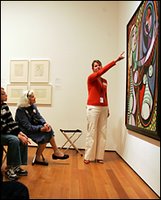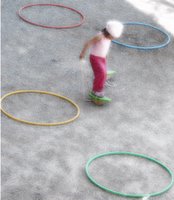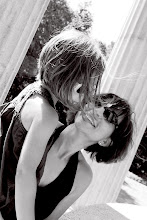Picasso Therapy
Picasso Therapy
I showed my portfolio to an unusual crowd the other day. It included Marge, Cecilia, Ed and Paula. None of them are curators. Probably not even art enthusiasts. What they have in common is old age and dementia.
I've been visiting residents at an assisted-living home. Given their declining states of mind and health, it's hard to know what to say or do, and it's not easy to have a conversation. Sometimes I just hold their hands, smile and get them tissues for their tears. I've played a few fiddle songs for them-- most clapped, although one resident, Vera, kept complaining she couldn't sleep with that noise. In an odd, and sometimes heartbreaking way, they can be a tough crowd.
I thought I'd try showing them things. One week I brought photographs of flowers from my yard. Everyone can relate to a flower, I thought. That's a nice, pretty thing to cheer someone up. They might say what their favorite was, or if they had flowers in their garden.
I thought about bringing photos of my paintings, but I worried that they weren't serene enough, or not as universally appealing as a flower.
 But then I read a feature in the New York Times, The Pablo Picasso Alzheimer's Therapy (October 30, 2005) that talked about folks using art as a therapeutic tool for people suffering with Alzheimer's. In this case, patients were getting the opportunity for private viewings of some Picasso paintings at the NY MOMA, and to good effect.
But then I read a feature in the New York Times, The Pablo Picasso Alzheimer's Therapy (October 30, 2005) that talked about folks using art as a therapeutic tool for people suffering with Alzheimer's. In this case, patients were getting the opportunity for private viewings of some Picasso paintings at the NY MOMA, and to good effect.Alzheimer's patients at the NY MOMA
One neurologist shared that he had seen "quite demented patients recognize and respond vividly to paintings and delight in painting at a time when they are scarcely responsive to words and disoriented and out of it."
They "did not wear the anxious, confused looks they had worn when they first arrived at the museum. They did not quarrel in the way that those suffering from Alzheimer's sometimes do. And when they talked about the paintings, they did not repeat themselves or lose the thread of the discussion, as they often do...."
At the NY MOMA there were moments of inspiration and clarity while typically inarticulate patients described what they saw in the paintings, whether they liked them or not, or how they felt about them.
So, I decided it couldn't hurt to give it a try.
I cannot report that I saw any dramatic epiphanies or moments of pure artistic joy. But several of the residents did interact and seem to enjoy it.
With one, I had the sense that she felt her old grandma-self, as if she was looking at the work of one of her grandkids, proud and impressed. She asked questions about where I went to school and how long some of the paintings took me.
One woman would flip through, saying she liked several of the paintings, commenting sometimes on the colors while I pointed out figures or faces, to be sure she could recognize the images. Then she distinctly said, "Ick" to one of the paintings. I found that just as interesting. It was a reaction.
During this, I could see another one of the residents looking over, trying to get a view. His eyes told me that he wanted a look. So I sat by him and showed him the portfolio. I don't think he said a word, just nodded and looked at me when he was done looking at each one and ready for me to turn the page.
It was nice sharing this with them. I figure it was at least something else for them to look at for a few minutes besides the TV. Oddly, since they don't remember much, I suppose I can bring it back in again and see who might be interested next time.
The NY Times piece also commented that originals proved more impactful than reproductions. Perhaps I'll bring in an actual painting vs. my printed portfolio. The larger-scale alone might generate more of a reaction.
On the practical side, since a painting doesn't make any noise-- bare minimum, Vera and some of the others can keep napping if they feel like it.
Link to the NY Times article: http://www.nytimes.com/2005/10/30/arts/design/30kenn.html?ex=1132635600&en=f6b121884e1a5847&ei=5070



